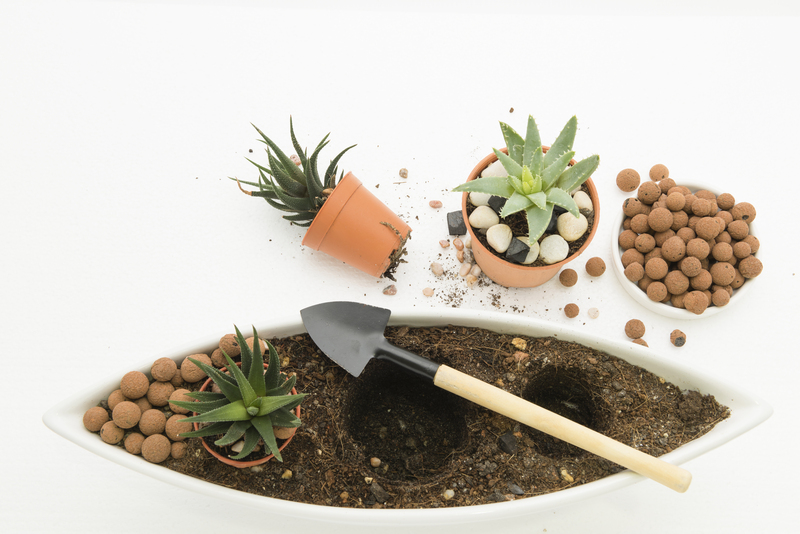How to Use Trees and Shrubs as Living Privacy Fences
Looking for an attractive, eco-friendly way to create privacy in your yard? Trees and shrubs can serve as living privacy fences, blending beauty, natural screening, and wildlife habitat into your landscaping. In this comprehensive guide, we'll teach you everything you need to know about using live green barriers to block sightlines, dampen noise, and enhance your property all year long.
Benefits of Using Trees and Shrubs as Living Privacy Screens
- Year-Round Visual Privacy - Evergreen trees and thick shrubs provide a lush, green barrier no matter the season.
- Noise Reduction - Foliage absorbs and diffuses sound, making your outdoor spaces quieter and more peaceful.
- Environmental Support - Trees and shrubs filter air, offer shade, and create vital bird and pollinator habitat.
- Natural Beauty & Curb Appeal - Living walls boost property value with seasonal colors, interesting textures, and attractive blooms.
- Wind & Dust Blockage - Plants act as windbreaks and capture airborne dust, creating a more enjoyable outdoor environment.
- Customization - Choose from an array of sizes, heights, colors, and growth habits for a fence that's perfectly tailored to your needs.

Types of Living Privacy Fences
There are a variety of ways to use greenery for natural privacy fencing. The ideal option depends on your space, climate, and maintenance preferences:
- Evergreen Trees: Durable, tall, and dense--ideal for year-round screening.
- Deciduous Trees: Fast-growing for summer coverage, with added fall color and winter interest.
- Flowering Shrubs: Combine privacy with seasonal blossoms and wildlife attraction.
- Hedges: Pruned shrubs for crisp, formal boundaries.
- Mixed Plantings: A blend of trees and shrubs for layered, naturalistic privacy walls.
Choosing the Right Plants for a Living Privacy Fence
Assess Your Site
- Sunlight: Is your fence line in full sun, partial shade, or complete shade?
- Soil Type: Is your soil clay, loam, or sandy? Well-drained or moist?
- Space: How wide can your hedge or planting area be? Is there overhead powerline clearance?
- Climate: What USDA Hardiness Zone are you in?
- Growth Rate: Do you want instant coverage, or can you wait as plants mature?
Popular Trees & Shrubs for Privacy Fencing
- Arborvitae: Thuja Green Giant and Emerald Green varieties are known for rapid, dense growth and year-round coverage.
- Holly: American and Nellie Stevens hollies make tough, evergreen screens with glossy leaves and red berries.
- Boxwood: A classic hedge shrub, easily trimmed for a neat, formal fence line.
- Privet: Fast-growing and easily shaped, suitable for formal or informal hedges.
- Wax Myrtle: Tolerates salt and drought, thriving in warmer coastal climates.
- Bamboo: Clumping varieties make tall, fast fences but need root barriers to prevent spreading.
- Yew: Shade tolerant and evergreen, with soft needles and a slow, manageable growth rate.
- Cypress: Leyland cypress is favored for rapid vertical growth and solid greenery.
- Viburnum: Offers fragrant blooms in spring and dense summer foliage.
- Photinia: Striking red-tipped new growth and glossy evergreen leaves.
Planning Your Living Privacy Wall
Design Principles for Natural Fences
- Layer for Full Coverage: Plant tall evergreens behind flowering shrubs or medium-height plants for thickness and visual interest.
- Stagger Plants: Arrange in a zigzag or double row to eliminate gaps and maximize privacy.
- Account for Mature Size: Don't crowd or overplant--give trees and shrubs room to reach their full height and width.
- Mix Textures and Colors: Combine fine, bold, and variegated foliage for year-round appeal.
- Seasonal Interest: Use deciduous plants for bright fall color or spring flowers, along with evergreens for winter screening.
Tip: If you need a living privacy fence quickly, start with a mix of fast-growing trees for immediate coverage and slower-growing shrubs for future density.
Site Preparation
- Clear the Area: Remove weeds, grass, and debris along your planned fence line.
- Test the Soil: Amend soil with compost or organic matter to enrich poor ground.
- Install Drip Irrigation: For extensive plantings, drip hoses or soaker hoses make watering efficient.
- Mark Planting Spots: Space according to mature plant dimensions, not nursery pot size!
How to Plant Trees and Shrubs for Privacy
Step-by-Step Planting Process
-
Dig Proper Holes:
- Width: 2-3 times wider than the root ball
- Depth: No deeper than the container or root ball
-
Prepare Each Plant:
- Loosen roots if potbound but avoid breaking them.
- Remove any encircling roots to prevent girdling.
-
Backfill with Care:
- Replace native soil and enrich with compost.
- Do not mound soil up against the trunk or stem.
-
Water Thoroughly:
- Saturate the root zone after planting.
- Mulch with 2-3 inches of organic material (but do not let mulch touch the trunk).
-
Stabilize Young Trees:
- Stake only if needed to prevent wind rock; remove stakes after one year.
Consistent watering is crucial for the first 1-2 growing seasons to help your living fence establish and thrive.
Maintaining Your Living Fence
Watering and Feeding
- Water deeply: Especially during drought and the first 2-3 years after planting.
- Fertilize annually: Choose a balanced, slow-release fertilizer in spring.
Pruning and Trimming
- Hedge Shrubs: Prune 1-3 times per year to encourage a full, bushy form and keep within boundaries.
- Tall Trees: Remove low limbs as needed to maintain clearance or sunlight where desired.
- Remove dead or diseased wood: Prune out browned or damaged branches at any time.
Disease and Pest Management
- Choose disease-resistant varieties whenever possible.
- Monitor regularly for aphids, scale, spider mites, or fungal issues.
- Use organic treatments (like horticultural oil or neem oil) for minor infestations.
Design Ideas: Living Privacy Fence Styles
Formal Evergreen Hedges
- Boxwood, Privet, or Yew: Uniform, tightly-sheared hedges are impressive and stately.
- Spacing: Plant closely, 18-36" apart, depending on ultimate width.
Naturalistic Mixed Screens
- Layered Plantings: Combine tall evergreens with medium viburnums and flowering shrubs for a dynamic look.
- Blended Heights: Irregular placement mimics a woodland edge and attracts more birds and pollinators.
Blooming Privacy Fences
- Use for seasonal pops of color: Lilac, rose of Sharon, forsythia, and hydrangea provide both privacy and stunning blooms.
- Pair with evergreens: For year-round coverage, combine blooming shrubs with a background of hollies or arborvitae.
Fast-Growing Temporary Screens
- Bamboo or willow: Install root barriers to control spread; ideal for quickly blocking views from new construction.
- Switchgrass or Miscanthus: Tall ornamental grasses grow quickly and create a surprisingly effective soft screen, especially for patios.
Common Mistakes to Avoid with Living Privacy Fences
- Planting too closely: Overcrowding reduces airflow, increases disease, and makes maintenance difficult. Give each plant its mature space.
- Neglecting maintenance: Without regular pruning and mulching, hedges become leggy, patchy, or overgrown.
- Ignoring soil and sunlight needs: The wrong plant in the wrong place leads to poor growth and bare patches.
- Selecting invasive species: Skip problematic species that escape into wild spaces or invade nearby gardens.

Frequently Asked Questions (FAQs)
How quickly will my living privacy fence grow?
- Growth rates vary: Arborvitae, privet, and Leyland cypress are some of the fastest, often rising 2-4 feet per year under good conditions. Slower growers like boxwood or holly may grow 6-12 inches per year, but generally require less pruning.
How do I keep my living fence green all year?
- Choose evergreen trees and shrubs for year-round screening. Supplement with deciduous plants for seasonal beauty.
Will a living fence block noise and wind?
- Yes, especially thick evergreen plantings: These reduce street noise and serve as effective windbreaks. The denser and fuller your hedge or tree line, the better the effect.
How often should I prune or trim?
- At least once per year for most shrubs: Some fast-growing hedges may need a mid-summer and late-fall trim. Trees are generally lower maintenance but may need shaping as they mature.
Conclusion: Living Privacy with Trees and Shrubs
A living privacy fence is more than an attractive boundary--it's a vital component of a sustainable, wildlife-friendly landscape. By investing time in smart planning, choosing plants well-suited to your climate and garden, and providing regular care, you can create a natural privacy fence that provides beauty, shelter, and year-round enjoyment for decades. Whether you prefer a classic formal hedge or a wild, layered screen, trees and shrubs are the ultimate green solution for privacy and peace of mind in your outdoor space.
Explore your landscape's possibilities and start planting a living fence that will transform your yard into a private paradise!